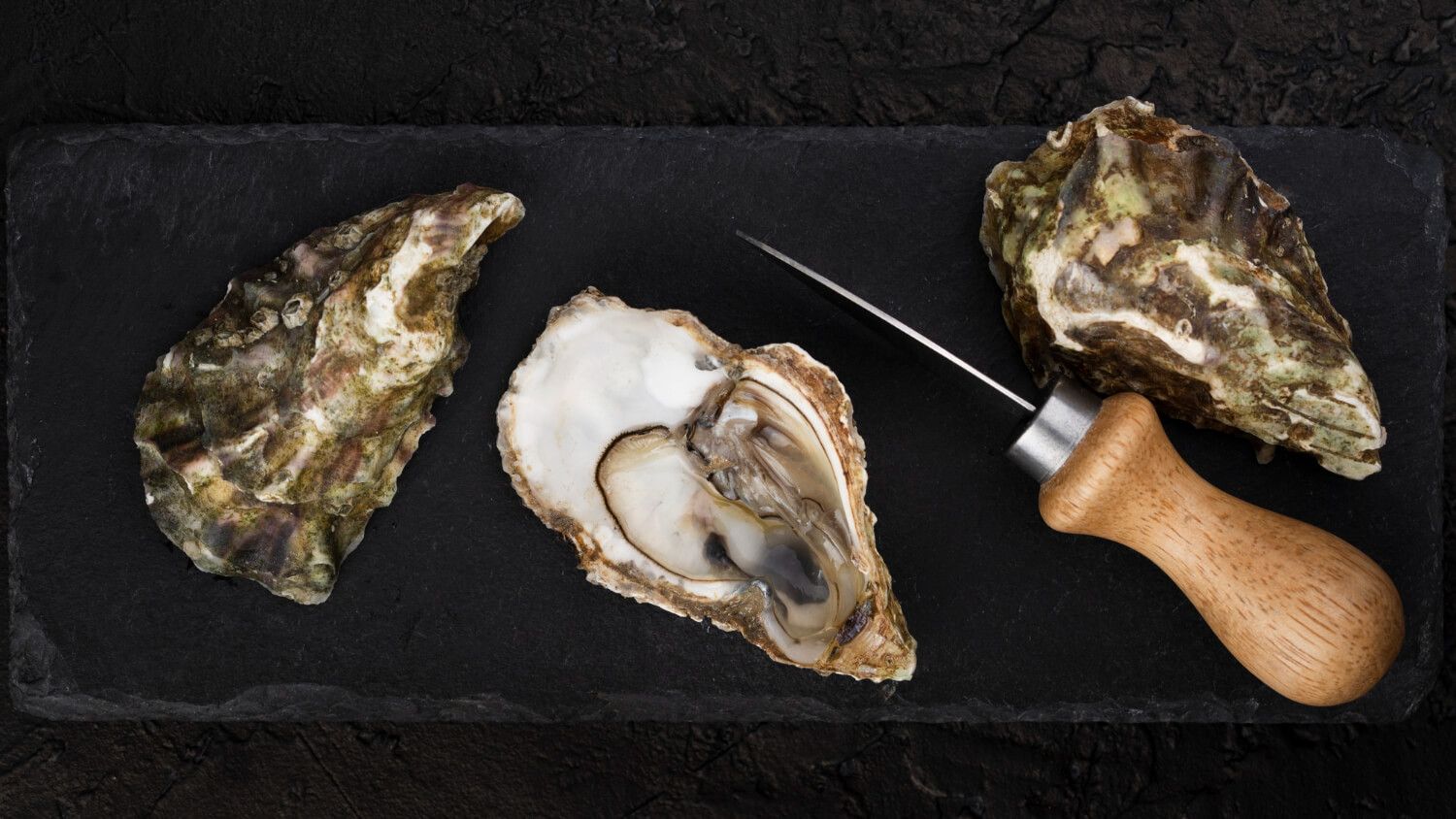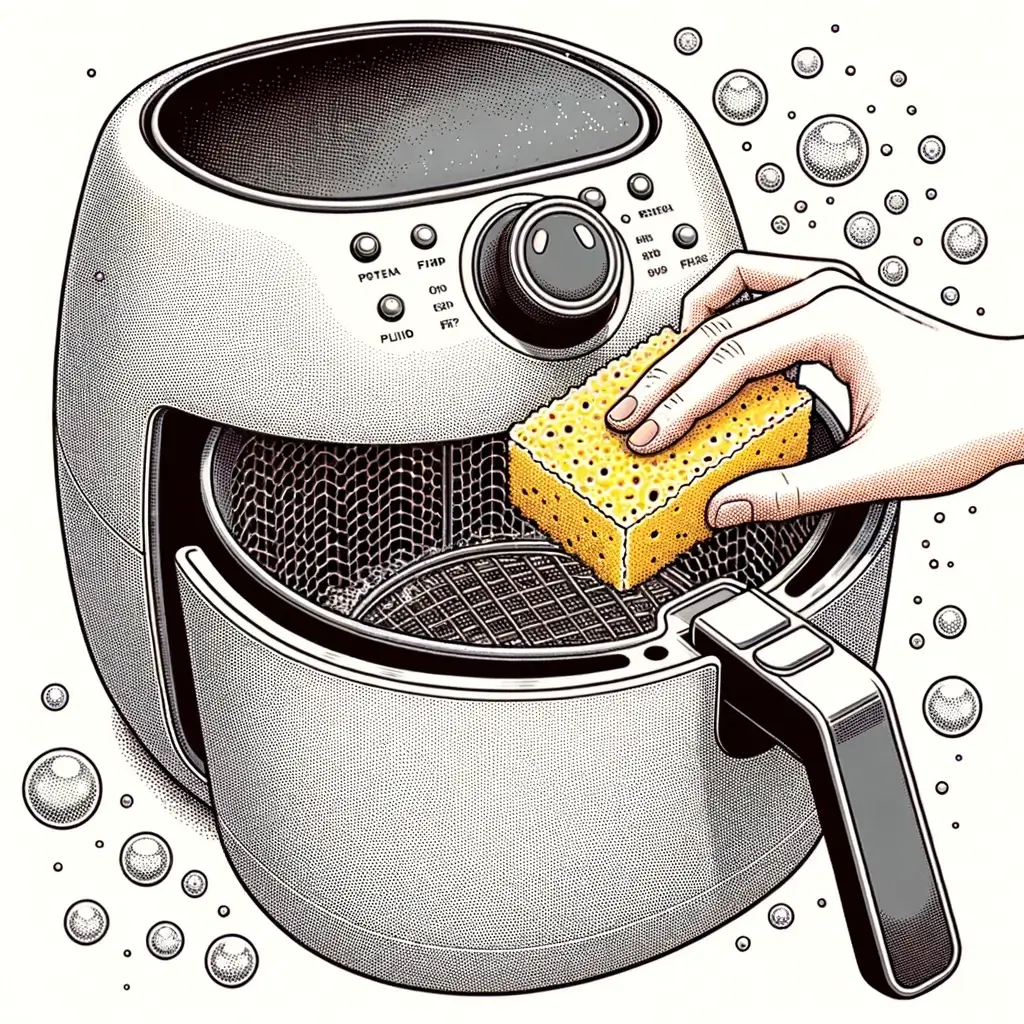The oyster knife is not your typical kitchen tool. Its unique design is tailored specifically for the delicate task of shucking oysters.
But what makes it so special? Let's dive deep into its anatomy and understand its design intricacies.
In This Article:
- Blade Design
- Handle Grip
- Tang and Bolster
- Tip Design
- Evolution of the Oyster Knife
- Comparing Oyster Knives with Regular Knives
- Conclusion
- Frequently Asked Questions
- Further Reading
Blade Design
The blade is the heart of an oyster knife, setting it apart from other culinary tools. Unlike the sharp edge of regular kitchen knives, the oyster knife's blade isn't primarily for slicing or dicing. Instead, its main function is to pry open the tough shells of oysters. This unique task requires a blade that is:
- Short and Stout: A compact, robust design provides the strength needed to tackle hard oyster shells without bending or breaking.
- Made of Stainless Steel: Oysters, being marine creatures, have salty liquor. Stainless steel is chosen for its corrosion-resistant properties, ensuring the blade remains rust-free even after repeated exposure to this briny liquid.
- Dull-edged: A sharp edge isn't necessary for shucking and can, in fact, be a hazard. The dull edge minimizes the risk of accidental cuts during the shucking process.
- Pointed Tip: The tip of the blade is often pointed, designed to penetrate the tight hinge of the oyster, making it easier to pry open.
Handle Grip
Shucking oysters requires not just strength but precision. The handle of the oyster knife plays a pivotal role in this:
- Ergonomic Design: The handle is crafted to fit comfortably in the hand, allowing for prolonged use without causing strain or discomfort.
- Material Variety: While the design is consistent in its ergonomic focus, the materials can vary. Some might prefer the traditional feel of a wooden handle, while others might opt for rubber or plastic for their water-resistant properties.
- Safety First: Given that shucking involves applying force, there's always a risk of the knife slipping, especially when oysters are wet and slippery. Hence, many oyster knife handles are designed with a non-slip grip, ensuring a firm hold throughout the shucking process.
Tang and Bolster
The tang and bolster are crucial components of an oyster knife, often overlooked but vital for both safety and durability:
- Tang: The tang is essentially an extension of the blade that runs into the handle. Its primary purpose is to provide stability and strength to the knife. There are different types of tangs, but the most sought-after is the full tang. A full tang runs the entire handle length, ensuring maximum durability and providing a balanced feel in hand.
- Bolster: Situated at the junction where the blade meets the handle; the bolster serves multiple purposes. It adds balance to the knife, ensuring that it doesn't feel too blade-heavy. More importantly, it acts as a safety feature. The bolster provides a barrier, preventing the user's hand from slipping onto the blade, especially during the forceful prying action of shucking.
Tip Design
The tip of an oyster knife is not a one-size-fits-all design. Depending on the shucking technique and the type of oysters, different tip designs are preferred:
- Narrow, Pointed Tip: This design is perfect for those who prefer the hinge method of shucking. The pointed tip easily penetrates the oyster's tight hinge, allowing for a smooth prying open.
- Rounded, Blunt Tip: A rounded tip is ideal for shuckers who use the side-entry method. It's designed to slide between the oyster's shells without damaging the delicate meat inside.
Evolution of the Oyster Knife
Like all tools, the oyster knife has a history, evolving over time to meet the changing needs of its users:
- Early Designs: The earliest oyster knives were simple tools with wooden handles. They were functional but lacked the ergonomic design of their modern counterparts.
- Modern Innovations: With advancements in materials and a better understanding of ergonomics, today's oyster knives blend tradition and innovation. Modern handles might be rubber or plastic, designed for a comfortable grip. The blades are crafted from high-quality stainless steel, ensuring longevity and resistance to corrosion.
- A Reflection of Needs: The evolution of the oyster knife isn't just about materials or design aesthetics. It's a reflection of the shucker's needs, emphasizing the importance of comfort, safety, and efficiency in this specialized culinary task.
Comparing Oyster Knives with Regular Knives
At first glance, one might assume that an oyster knife is just another variant of the many knives found in a kitchen. However, when you delve deeper into its design and purpose, it becomes clear that the oyster knife is a unique tool, distinct from its kitchen counterparts.
- Function Over Form: The primary function of an oyster knife is not to cut or slice but to pry open oyster shells. This starkly contrasts regular kitchen knives, which are designed primarily for cutting, chopping, and slicing.
- Blade Design: The blade of an oyster knife is robust and stout. Unlike regular knives' sharp, thin blades, an oyster knife's blade is thick, ensuring it can withstand the pressure of prying open a hard oyster shell without bending or breaking.
- Edge Sharpness: While kitchen knives pride themselves on razor-sharp edges for precision cutting, an oyster knife intentionally has a duller edge. This design ensures safety during the shucking process, as a sharp edge could easily cause injuries.
- Handle Ergonomics: The handle of an oyster knife is crafted for a specific type of grip, ensuring maximum leverage when prying open shells. On the other hand, regular kitchen knives have handles designed for various cutting tasks, from dicing onions to carving meat.
- Material and Maintenance: Oyster knives are often made of corrosion-resistant materials like stainless steel, given the salty nature of oysters. In contrast, kitchen knives come in a range of materials, from carbon steel to ceramic, each requiring different care and maintenance routines.
While both are termed "knives," the oyster knife stands out with its specialized design tailored for the unique task of shucking oysters, setting it apart from the versatile range of regular kitchen knives.
Conclusion
Understanding the unique design of the oyster knife is crucial for anyone passionate about oysters. Its anatomy is a testament to the importance of having the right tool for the job, ensuring efficient and safe shucking every time.
Frequently Asked Questions
Why is the design of an oyster knife different from regular knives?
The oyster knife is designed specifically for prying open oyster shells, not cutting. Its stout blade, ergonomic handle, and specialized tip make it uniquely suited for shucking.
How does the handle grip of an oyster knife enhance safety?
The handle's ergonomic design provides a firm, non-slip grip, ensuring the knife doesn't slip during the shucking process.
What materials are commonly used in oyster knife blades?
Stainless steel is the most common material due to its resistance to corrosion from salty oyster liquor.
Further Reading
- Oyster Knife Care: Tips for Longevity and Performance: Now that you understand the design of an oyster knife, learn how to maintain and care for it. Explore expert tips to ensure your knife remains sharp and efficient for every shucking session.
- Discover the craftsmanship and significance of the 'Oyster Shucking Knife' from Crisfield, Maryland, and its pivotal role in the Chesapeake Bay's oyster industry, as detailed by National Museum of American History.
- If you're searching for the top oyster knife, don't miss our comprehensive review in our article on the best oyster knife.



